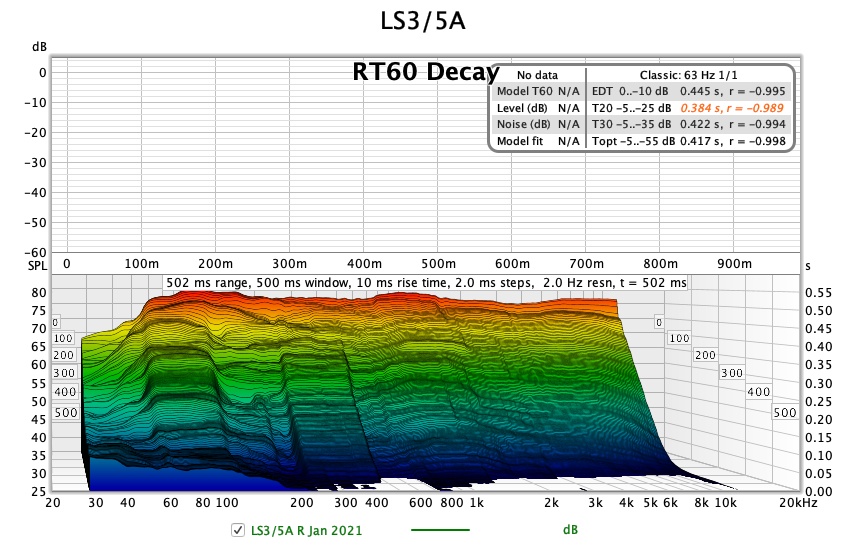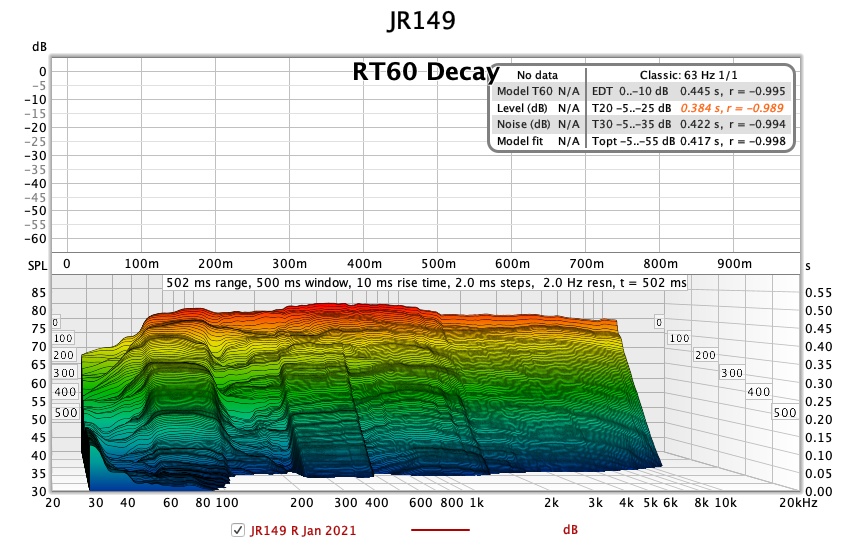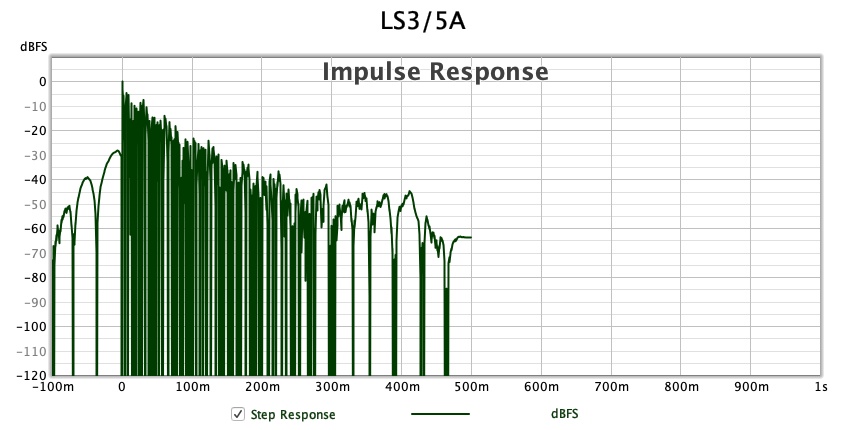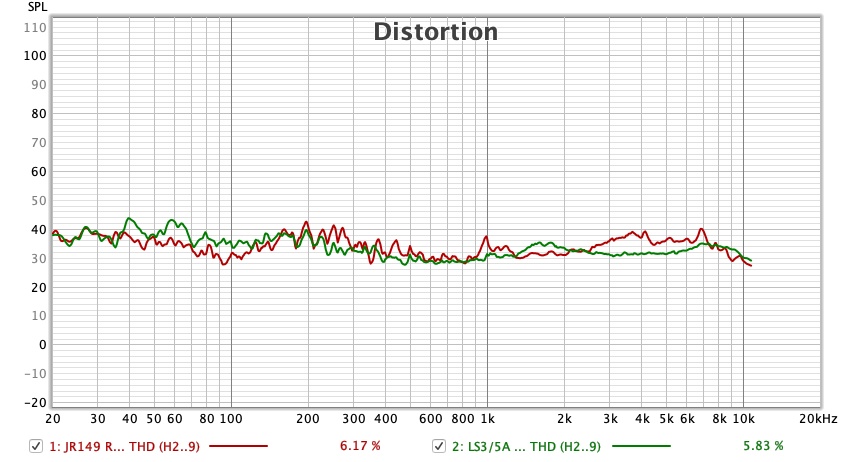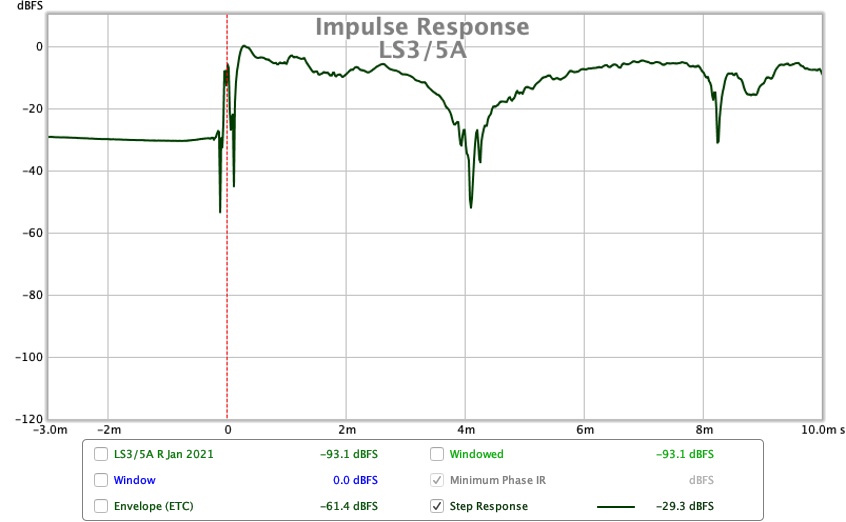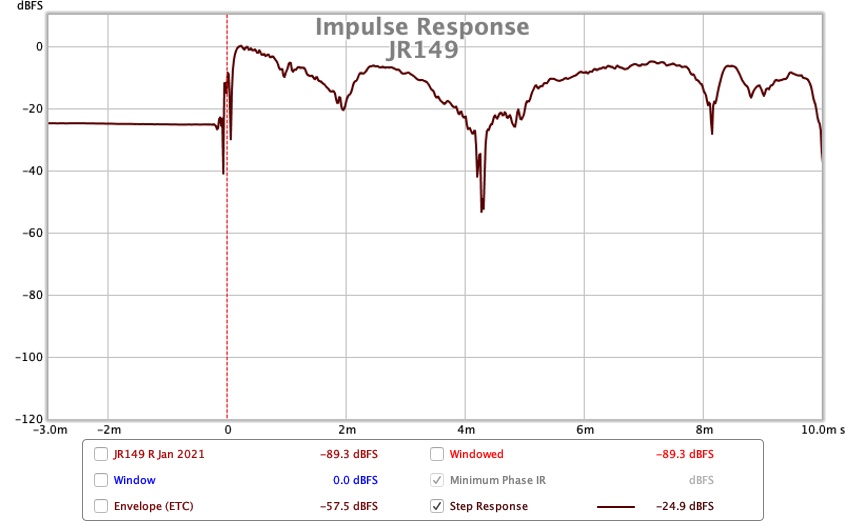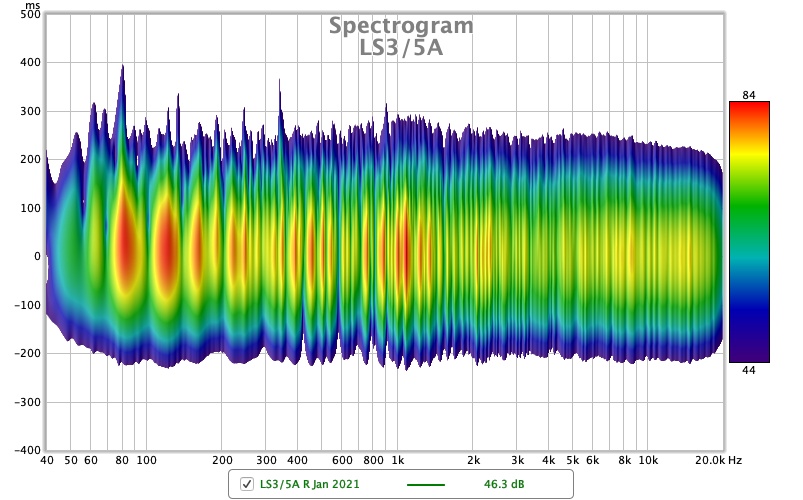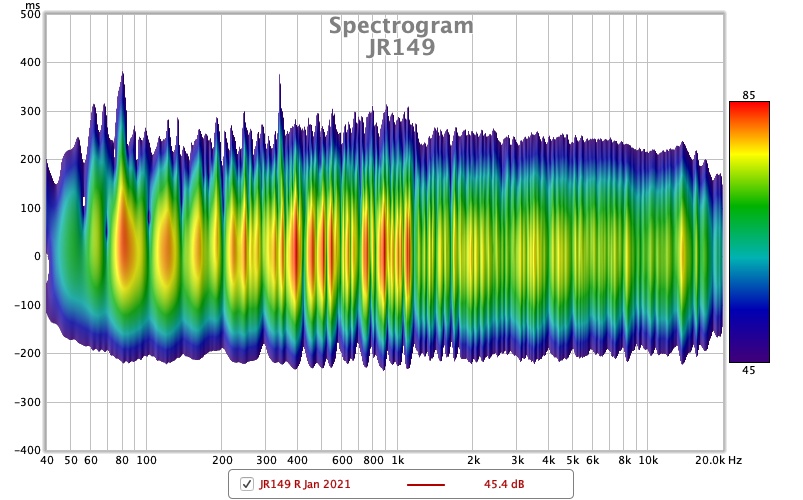S-Man
StrivingON
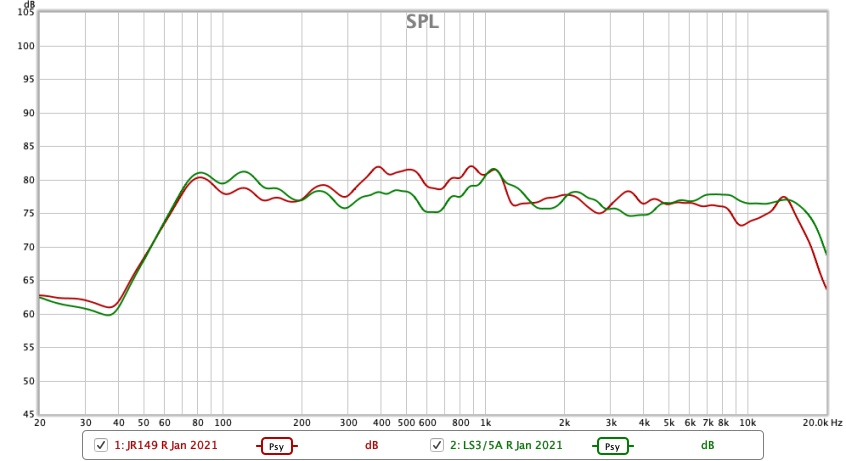
Here’s a ‘psychoacoustic’ smoothing which might make it easier to gauge the character traits. I suspect the big tonal difference is between 350Hz-1kHz. The crossover region around 3-4kHz is noticeably different too, and again I suspect there is more to be told there as that is the make/break of any multi-way speaker to my ears. This smoothing also highlights the LS3/5A’s bass bump at 110Hz or so.
Interesting comparison!
IMO:
Up to 200Hz can be changed dramatically by positioning/room.
The region between 300Hz and 900 Hz will be the most obvious difference. There is 3 to 4dB difference over >1 octave.
3KHz to 4KHz is < 1 octave so the 3dB difference will be less audible... unless the off-axis curves (power response) are very different.
The 1.1KHz peak of the LS3/5A might cause brass instruments to sound more brassy.
Altbough they have the same output at 1KHz, so nominally would have the same specified sensitivity, I would expect the JRs to sound slightly louder.


